- Ilha de Tavira
- Praia do Barril
- Igreja da Misericórdia
- Cabanas de Tavira
- Roman Bridge
- Tavira Castle
- Igreja de Santa Maria do Castelo
- Igreja de Santiago
- Day Trip to Cacela Velha
- Day Trip to Ilha da Fuseta
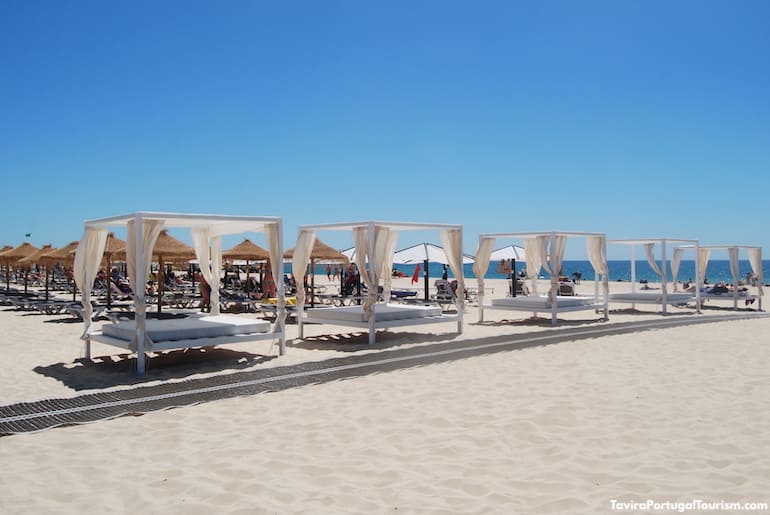
The biggest of Tavira’s two islands stretches for 11km (approximately 7 miles) and is divided into four beaches. The one on the easternmost side has the name of the island but is also known as Praia de Tavira (“Tavira Beach”). It’s the city’s most popular beach, but is never overcrowded. There’s plenty of space to lie on the white sand with almost no one around, but those looking for a livelier atmosphere will find it by the beachfront restaurants, which are the only structures on the island. There are also soccer and volleyball nets, and parasols and loungers for rent. Getting there involves taking a very quick ferry and a short walk through a wooded area with pine trees.
See the Ilha de Tavira Guide.
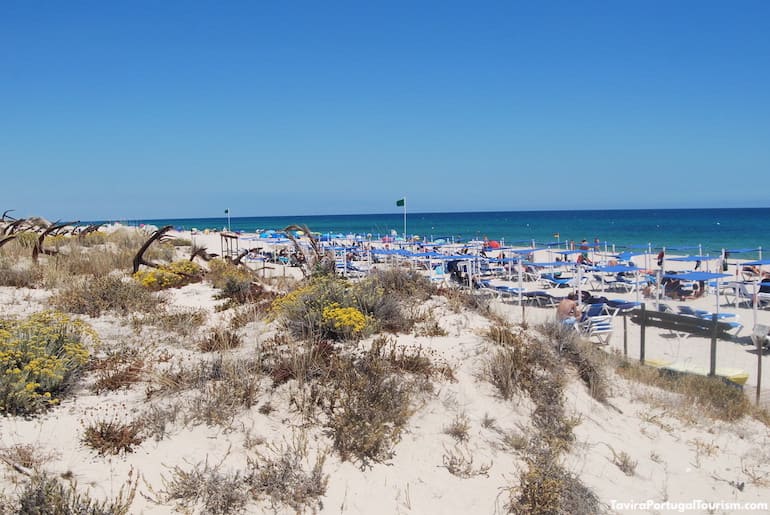
It’s one of Algarve’s most photographed beaches, due to an odd display of over 100 anchors on the dunes. Those were left behind by a once thriving fishing community, and the homes where fishermen lived for a large part of the year have been turned into beach bars and restaurants. It’s accessed via a footpath over the wildlife-rich lagoons of the Ria Formosa Natural Park or with the help of a miniature train originally used to transport the fishermen and their catch. The white sand extends for several kilometers, and those who go for a walk to the west will end up in a nearly deserted area which has been officially declared a nude beach.
See the Praia do Barril Guide.
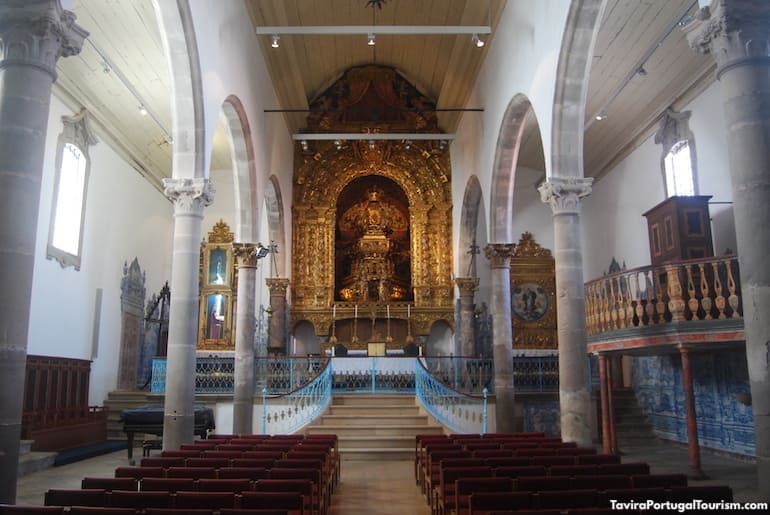
Tavira has close to two dozen historic churches, but this is the one you should not miss. It’s the finest Renaissance monument in Algarve, built in 1541 and embellished with baroque decoration in the 1700s. The magnificent retable dates from 1722, so it’s an extremely rare survivor of the 1755 earthquake that destroyed most of the city. The walls are lined with blue-and-white tile panels, created in 1760 in the rococo style and illustrating scenes from the life of Christ plus the 14 works of spiritual and corporal mercy. It’s worth climbing up to the bell tower for a view over Tavira.
See the Igreja da Misericórdia Guide.
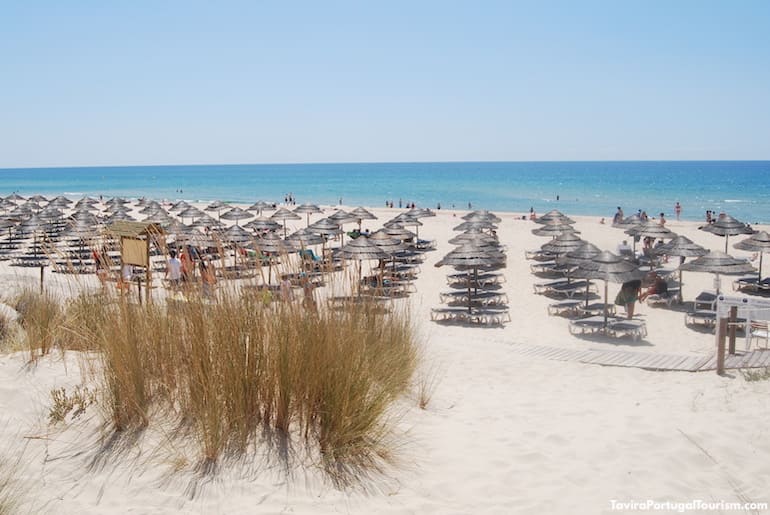
Tavira’s second island has one long beach, with 7 kilometers (over 4 miles) of soft, white sand. This means that even in July and August it’s never crowded. It has just one restaurant, reached via a boardwalk that protects the dunes. To get there, you have to head to the fishing village of Cabanas de Tavira, to the east of the center of Tavira, and take a boat. It takes less than 5 minutes to reach the island, and the journey offers an opportunity to observe a variety of birds and a fort built in the 1600s to protect the port of Tavira.
See the Cabanas de Tavira Guide.
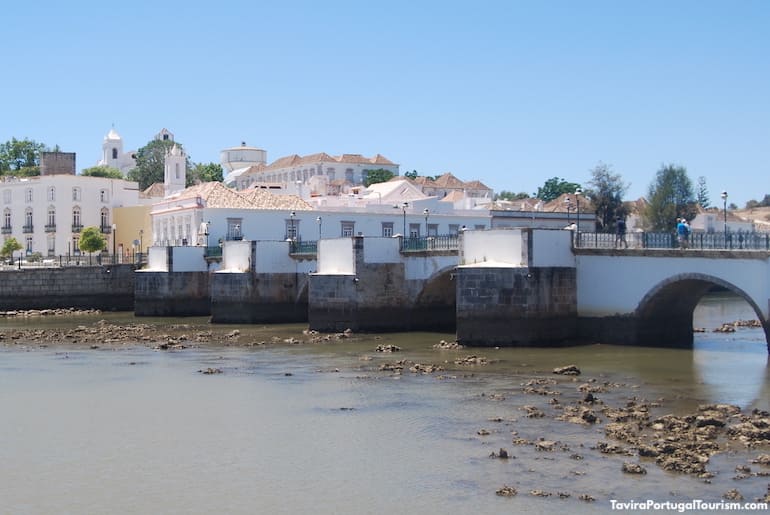
For the best view of Tavira, cross this seven-arched bridge which is said to date back to Roman times. It was part of the route connecting Ossonoba (today’s Faro) and Baesuris (now Castro Marim), but nothing of that first structure survives to this day. It was restored and rebuilt over the centuries, most significantly in 1667 and most recently in 1989, when it was damaged by a major flood. Cars are no longer allowed on it, so it’s exclusively used by pedestrians to cross the river or to photograph a panoramic view of the city.
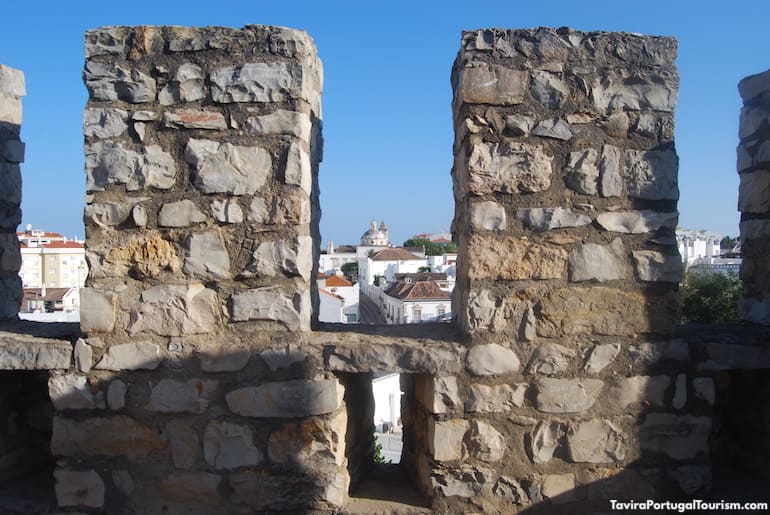
Tavira’s castle is in ruins, but has been landscaped and offers a view over the city, so it’s very much worth visiting. The first fortification on this site was built by the Phoenicians, but this is essentially a Moorish construction from the 10th century, expanded in the 1200s, when the Moors were expelled and Tavira became part of the Kingdom of Portugal. It was destroyed in the 1755 earthquake and only the walls and towers survive.
See the Tavira Castle Guide.
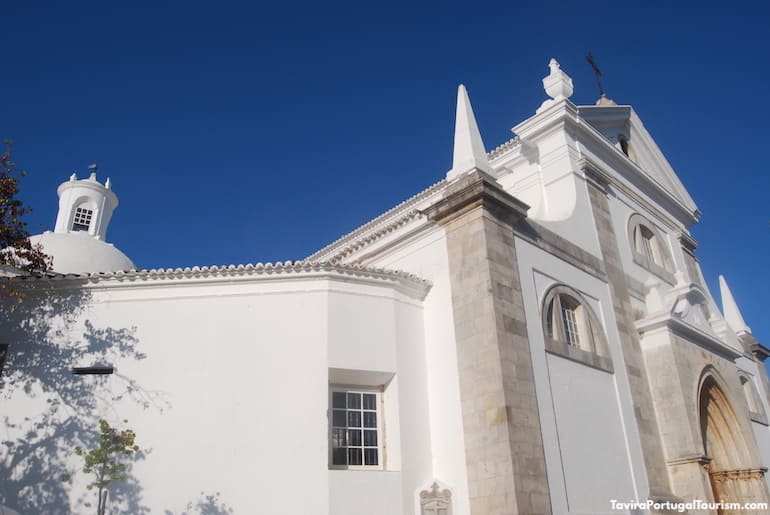
Located a short walk from the castle, this is a 13th-century church largely rebuilt after the 1755 earthquake. It maintains the original gothic portal and a couple of gothic and Manueline (Portuguese gothic) chapels, but everything else dates from the reconstruction. It also houses the tombs of seven knights and Paio Peres Correia, who helped conquer Tavira from the Moors in 1242. The large clock on one of the towers was added in the 1800s and is one of Tavira’s main landmarks. It’s open for visits on weekdays and Saturday mornings.
Largo Abu-Otmane
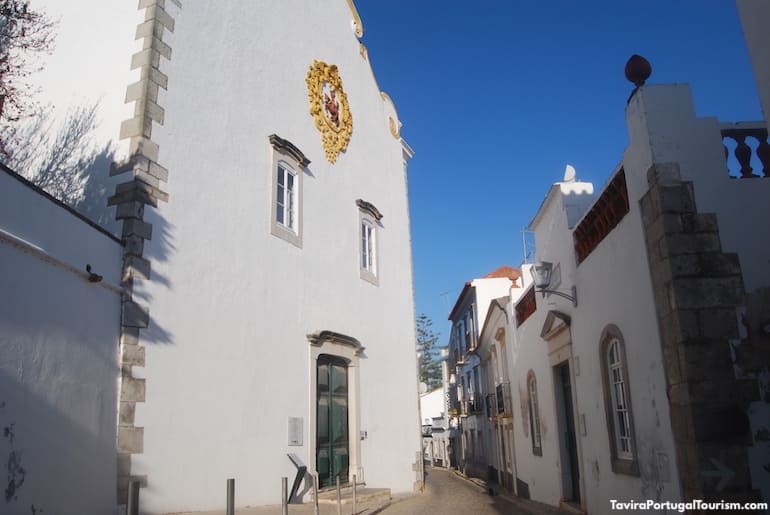
This church is very similar to Santa Maria do Castelo, and stands just a few feet away. It dates back to 1270, and just like almost everything else in town, was restored after the 1755 earthquake. It kept the exterior plain, but was decorated with art (including 15th-century paintings and baroque altarpieces) brough from local churches and convents. The façade features a medallion representing a warrior-like St. James, alluding to a legend that says that he miraculously appeared in the battle of the Christian reconquest of Tavira. You may visit the interior on weekdays and Saturday mornings.
Rua Dom Paio Peres Correia

When in Tavira, take the opportunity to visit one of the tiniest yet most enchanting villages in Algarve. It’s found immediately to the east, about 15 minutes away and standing above the Ria Formosa Natural Park. Its beach is magnificent, and there’s a postcard-perfect panoramic view over the lagoons and the sea by the small church and 18th-century fortress, which are the village’s only constructions, besides the little over a dozen houses.
See the Cacela Velha Tourism Guide.
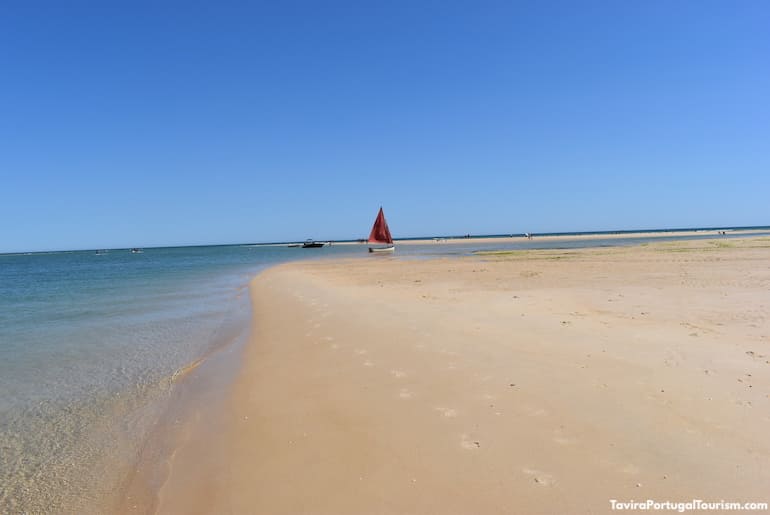
To the west of Tavira is yet another island of the Ria Formosa Natural Park. It’s reached by boat from the fishing village of Fuseta (sometimes spelled Fuzeta) and has a wonderful beach that still attracts more locals than tourists. When you arrive, walk east (to the left when facing the sea), which is the quieter and more beautiful spot on the island, offering a view of the beaches in Ilha de Tavira.
See the Ilha da Fuseta Tourism Guide.